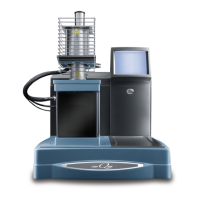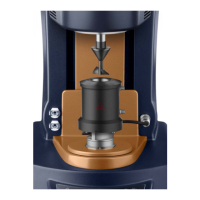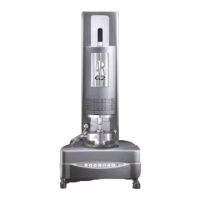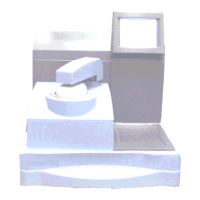Appendix B
B–48 TA I
NSTRUMENTS
TGA 2950
If no satisfactory sensitivity setting can be
found, the problem may be too low a resolution
setting or too high a heating rate. Try a higher
resolution setting (larger negative number) to
reduce the percent/minute set point and rerun the
experiment. Set points in the range of 0.1 to
1.0%/minute (resolution settings -5.0 to -3.0)
generally give the best results.
If the percent/minute overshoot is primarily
associated with the first transition of a group of
overlapped transitions, the problem may be too
high a maximum heating rate. Try reducing the
heating rate of the Hi-Res
TM
ramp segment by
one half and rerunning the experiment. Heating
rates in the range of 1.0 to 5.0
°
C/minute gener-
ally give the best results.
When heating rates higher than 5.0
°
C/minute are
used, proper adjustment of sensitivity setting
becomes critical to maintaining smooth heating
control. The default sensitivity of 1.0 is usually
too low at these higher heating rates and typi-
cally results in significant transition temperature
overshoot and heating control ringing as
shown in Figure B.9. At high heating rates a
setting of 3.0 or 4.0 will give better results for
most materials. The improvement can be seen in
Figure B.10. If sensitivity setting is adjusted too
high, then continuous control cycling may result
as shown in Figure B.11. With some experi-
mentation, an optimal setting can usually be
found. When very high heating rates are used
(greater than 10/
°
C/minute) it may be impossible
to completely eliminate control ringing. How-
ever this should not affect the quantitative
measurement of weight loss for the transition.

